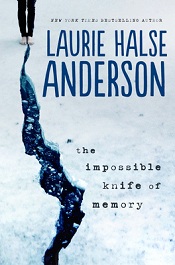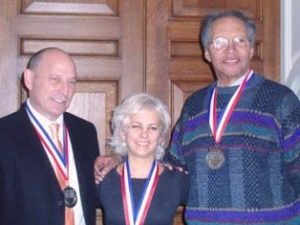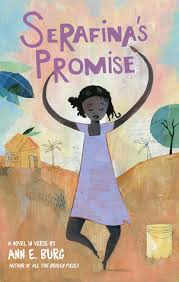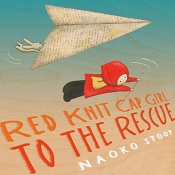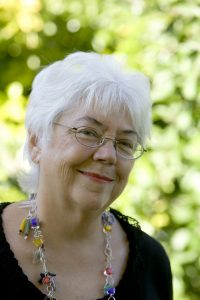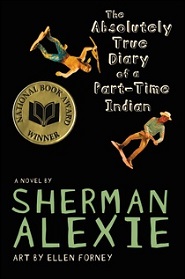Year: 2014
-
Penguin Young Readers Group Acquires Highly-Anticipated Debut Novel ‘An Ember in the Ashes’ in Major Pre-Empt
New York, NY — Razorbill, an imprint of Penguin Young Readers Group, has acquired Sabaa Tahir’s highly-anticipated debut novel An Ember in the Ashes in a major pre-empt. Film rights have already …
-
Mitali Perkins’ Students Debate Whether or Not Faces Belong on Book Covers
At one point in the course, Perkins will talk about faces and question whether or not young adult and middle grade novels should depict faces on the jackets. Is it …
-
Candlewick Press Announces New Picture Book From Bestselling Creators Mac Barnett & Jon Klassen
SOMERVILLE, MA – New York Times bestselling author and illustrator Mac Barnett and Jon Klassen have teamed up for the new picture book, Sam and Dave Dig a Hole, to be published October 14, 2014. …
-
Laurie Halse Anderson on Writing Unresolved Endings
“This is my one beef with Hollywood: It’s great for movie sales, but they’ve created this fiction for us that, when you have a hard thing in your life, it’s …
-
The Harry Potter Alliance Named a Winner in the 2013 Project for Awesome
Ten other nonprofits have also been recognized by this initiative; one of them is the literacy organization First Book. The Fault in Our Stars novelist John Green announced the winners …
-
Outstanding Literary Work Nominated For NAACP Image Awards
Outstanding Literary Work – Children “I’m A Pretty Little Black Girl!” – Betty K. Bynum (Author), Claire Armstrong-Parod (Illustrator) (Dream Title Publishing)“Knock Knock: My Dad’s Dream for Me” – Daniel …
-
Kate DiCamillo is Sworn In as National Ambassador for Young People’s Literature
Kate’s platform, “Stories Connect Us”, is also a tribute and a rousing call about the importance of story. “Stories for me are a glass-bottom boat ride. We see each other; we …
-
How Do Stories Connect Us? A Q&A with National Ambassador Kate DiCamillo
What are some things you are most looking forward to during your time as National Ambassador?I am looking forward to going places I haven’t gone. I am looking forward to …
-
DreamWorks Teams Up with Fuhu to Create Tablet for Kids
“For DreamWorks Animation, this marks the continued extension of its brand into new arenas for the digital-savvy kid. The film studio has expanded into television, acquired a prominent YouTube network …
-
A Guide to Writing POC Characters If You Are White by Kayla Ancrum
“A colleague of mine was talking to me recently about her misgivings about her capabilities regarding writing Women of Color. She wanted very badly to include several WOC characters in her sci-fantasy …
-
Ariel Cohn and Aron Nels Steinke to Create ‘The Zoo Box’
The story follows Erika and Patrick on a night when they are left home alone with a very special mystery box. The authors intend to make this a book that can …
-
CBC Diversity: Q&A with Serafina’s Promise Author Ann Burg
Serafina’s Promise is the story of eleven-year-old Serafina, who grows up in extreme poverty in a rural village outside Port-au-Prince. Why did you choose to write about Haiti?
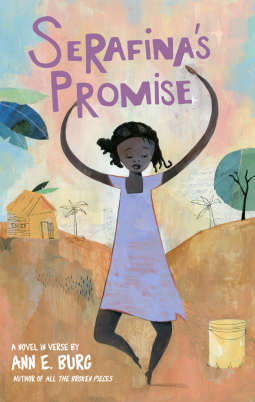
Until the devastating earthquake of 2010, I knew very little about Haiti. After the earthquake, like most people, I was shocked and overwhelmed by the catastrophic devastation that Haiti suffered. The images of so many people broken and lost, dazed and frightened, haunted me. Their faces—especially the children’s faces—followed me everywhere and demanded that I learn more about them. After reading and researching, I discovered that Haiti is so much more than the sum of her tragedies and troubles. The more I learned, the more I hoped to find a way to tell an authentic and illuminating story.
While the earthquake is the climax of the novel, Serafina’s story is about so much more than the natural disaster. Can you talk about how Serafina and her story took shape?
What struck me most about the Haitian people is their resiliency. The earthquake was a cataclysmic disaster, but it is not the only one the Haitian people have suffered. In addition to floods, mudslides, and other forces of nature, there is a daily struggle with poverty, hunger, and a lack of clean water. Constant political upheaval has also taken its toll. And yet, if you look at the faces of Haiti’s children, you will see bright, beautiful smiles. If you listen to their voices, you will hear laughter and song. They are part of a vibrant heritage, filled with music, dancing, rich customs, and traditions. I wanted Serafina to be an embodiment of that buoyant Haitian spirit. More and more, I’ve come to understand that writing is less about creating than it is about listening. When I listened to the voices of Haiti’s children, I heard the joyful hope that is the birthright of children everywhere. Eventually, a single voice—Serafina’s voice—began to play in my mind. I listened and followed.
Natural disasters are increasing worldwide. Often, people have hardly begun to recover from one before there is another somewhere else, demanding our attention. How can fiction help?
I can honestly say that every disaster deepens my sense of a shared humanity and fills me with a desire to offer comfort and assistance. I know that financial assistance is often the most needed, but sometimes we make our donations and then forget that people continue to suffer long after the last penny has been spent. Natural disasters do seem to be increasing and today’s tragic headline often bumps yesterday’s tragic headline to the back page. Even the most in-depth article leaves us on the outside looking in. Fiction is different. Fiction takes us by the hand and allows us to look behind the headlines. When we truly engage with the characters in a book, we actually experience what they experience and feel what they feel. We develop empathy. In the best stories, characters linger in our minds and in our hearts. They remind us of a deeper reality and our shared humanity.
I love learning about other cultures through stories, and I found the Haitian Creole culture fascinating. What interested you most about it?
I was intrigued by Haiti’s history. Haiti was the first independent black republic, and that should be lauded. As Serafina’s teacher, Monsieur Leblanc, tells her and her classmates, Columbus saw a land with lush green fields and fruitful mountains. Compare that to the images of Haiti today! Throughout their history, Haitian people have been mistreated and misguided by both internal and external forces and yet, what is most beautiful remains—the hopeful and persevering spirit of the Haitian people. As Maman tells Serafina, even when life is hard, “You beat the drum and you dance again.”
Can you discuss your work with the Haitian People’s Support Project and with Professor Denize Lauture?
The Haitian People’s Support Project is a humanitarian organization that promotes self-sufficiency and independence for people in Haiti through the support of orphanages, schools, and a number of sustainable farming projects. When I completed my first draft of Serafina’s Promise, I contacted Pierre LeRoy, the founder of the Project. I was writing about a culture very different from my own, and I hoped that Pierre or someone he knew would be willing to read and verify the authenticity of my manuscript. Since my story contained so many Haitian Creole phrases, Pierre introduced me to Denize Lauture, a language professor at St. Thomas Acquinas College in Sparkhill, New York, and a native of Haiti. Professor Lauture is also an author who writes in English, French, and Haitian Creole. He painstakingly reviewed my manuscript, corrected my Haitian Creole, gave me further insight into the Haitian culture, and, with an open heart, shared his own childhood memories.
You are donating a portion of the proceeds from Serafina’s Promise to support the people of Haiti. Can you tell us a little about the charities you have targeted?
I am donating part of my royalties to the Haitian People’s Support Project and Pure Water for the World, a non-profit organization that provides safe drinking water and hygiene education to developing countries. They allow you to indicate what area you’d like to help, and my money is going to the region in Haiti where Professor Lauture was born. Hopefully, in time, people there will no longer be forced to drink and bathe in rainwater.
The voice in your novels is so distinctive. How do you create voice?
I think that an authentic voice is the result of a writer’s ability to let go of his or her conscious control of a character’s thoughts and words. Of course I know I am writing the story and of course I have some measure of control over my creation. But at the same time, I must forfeit my own expectations and allow each character to develop a unique and unfettered intuition. I spend a lot of time with my characters even when I’m away from my desk. Eventually there is a seamless connection between us. I do the typing, but my character does the talking!
As a former middle-school English teacher, how might you have explored the topics in Serafina’s Promise with your students?
I always encouraged my students to appreciate the customs and traditions of all people—and to look beyond surface differences to see what unites us. If I were teaching Serafina’s Promise, I would ask my students to compare and contrast their life experiences with Serafina’s. Naturally, there are many differences to consider, but hopefully they would discover that people are more alike than different.
Your previous novel, All the Broken Pieces, is also written in verse. What about the verse form appeals to you?
Verse allows me jump into the heart of a character and a story. A million details accost our senses at every moment, but in the privacy of our minds, we contemplate only what is most essential. A clock ticks. Water from the faucet drips. These details will only be important to the reader if they are important to the character. I find writing in verse liberating because I am able to concentrate on the essential.
The subject matter in your books is serious and often difficult. Yet you manage to suffuse your stories with light and hope and, as Kirkus put it, “elegiac simplicity.” How do you keep your stories authentic and emotional without becoming too dark? And how do you decide how much to tell?
As adults, we know how serious, difficult, and full of ugliness life can be. But I don’t think I could write for children if I didn’t believe that there is a measure of hope in the darkest of circumstances. Natural disasters shock and overwhelm us. We can’t erase evil or hide ugliness, but we can—and I believe we must—offer an alternate perspective.
Most of the hard things that happen in Serafina’s story are natural disasters that can be easily understood by young readers. But there are problems in Haiti that are far more difficult for American readers of any age to understand. One of these problems concerns restaveks—children from poor families who are sent away to live with wealthier families. In exchange for food, shelter, and education, restaveks are forced into domestic slavery, gathering water, cooking, and cleaning. They are poorly fed, barely sheltered, and in actuality, seldom sent to school. In many cases, they are abused by members of the host family.
It is hard for us to comprehend a parent giving away a child. And it is difficult to extol a culture that would allow this practice to continue. But Haiti’s poverty is so deep and unrelenting that parents are forced to make unnatural and devastating choices. I didn’t think it was fair to pose this issue to children when, even as adults, we might struggle to be nonjudgmental. Instead, Julie Marie’s story is an opened door. Guided by a parent, teacher, or librarian, a mature reader may peek through the opening, but is not forced to do so. I took the same approach to the Tonton Macoutes and Doc Duvalier’s reign of terror.
Can you talk about your writing and revision process? What are the most critical stages?
Usually the process starts with a nagging feeling, a reaction to an incident or circumstance that I’ve read about or experienced. Sometimes I carry the feeling with me for a long time before it evolves into something more. After a while, I might try forcing the feeling into what I think will be a believable character or situation. But that only leads to lots of false starts. Characters won’t fully materialize and situations remain static. I’m compelled to read and research more, to think, and to ask myself more questions while I wait and listen. The waiting and listening is the most critical stage. Once I discover something I’d like to write about, I am always anxious to begin the journey. I prefer the later stages when my character is firmly alive in my mind and can be moved about like a chess piece. There is so much wonderful freedom then! I can make mistakes, introduce new characters, and even change the flight path without losing my way. Once I have completed a draft that I believe is ready to show you, I get ready for the real revisions. This is one of my favorite parts of the process! Working with you is like hiking with a friend. You’ll ask me to follow a new trail or to look under an ordinary rock. Often we discover a beautiful path worth following or a whole universe squirming and squiggling underneath an ordinary slab of slate! By this time, my own feelings—the ones that initially motivated me—are completely absorbed in the life of the characters I’ve discovered. The story almost writes itself. This is when I love writing!
Your books require a lot of research even though they are works of fiction. Can you talk about the research for Serafina’s Promise?
Because I was unable to leave my family and home commitments, I traveled to Haiti via books, videos, and vlogs. Early on, I discovered that the culture and wisdom of Haiti is captured in a multitude of proverbs. I loved these proverbs and wove them in through Gogo, Serafina’s grandmother. But a curious aspect to many Haitian proverbs is that they deride the French language and French speakers. I began digging for the root of this antagonism and discovered that the majority of people in Haiti speak Haitian Creole, but that the “educated” people speak French. Serafina, who is torn between pride in her Creole heritage and a desire to be educated, exemplifies this unfortunate dichotomy.
I love how Dr. Solaine mentors Serafina. Who in your life inspired and encouraged you to write?
My mother always wrote poetry and though I am not an only child, I am the only child for whom she wrote a poem: On the tenth of December, cold and clear, an angel bent down and whispered, your child is here, your child is here…These are the opening lines of the poem she wrote shortly after I was born. I always thought that my mother’s poem marked me as a writer, because my earliest memories are her beautiful voice and loving words. According to my mother, my first book, bound in brown construction paper and entitled Pomes was a masterpiece. How then could I not continue writing? Both of my parents were so proud of me that I knew from a very young age that I wanted to be a writer. In college, I had a number of professors who believed in me and inspired me to follow my heart and search for my voice. If you are a parent, teacher, or librarian, never underestimate your power to encourage and support a child!
What’s next for you?
I’m not entirely sure, but I’m listening for voices and stories all the time!
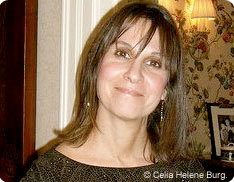
Ann Burg was born in Brooklyn, New York and moved to New Jersey when she was in the third grade. Her earliest book, bound in brown construction paper and red yarn, was entitled Pomes and contained short but memorable stanzas dedicated to her baby brother and her favorite doll. An English teacher for more than 10 years, Ann pursued her interest in writing throughout her teaching career and had several articles published in newspapers throughout New York and New Jersey. She continued to write stories, plays and lullabies for her siblings, her students and eventually her own children.
In 2003, Ann finally decided to leave teaching and write full time. She now lives in Rhinebeck, New York with her husband, her children and one exceedingly cute but ill-behaved dog. Visit her website at annburg.com and read her post about what she learned from writing Serafina’s Promise.
-
How Has Book PR Changed?
“Authors and publishers are still readjusting expectations in a digital era where ‘what’s your platform’ has become a question of vital importance, and the ‘marathon, not a sprint’ mantra is …
-
Naoko Stoop Talks About Her Creative Process
To create the artwork for her books, she starts off with “a piece of wood which has the right grain for the scene, then I start with background. This is …
-
Black Feminist Writers Discuss Black Girls in YA; Rue in The Hunger Games
“I have more hope than fear at this point. I’m teaching my daughters in an indirect way to think critically about everything they’re consuming. If they’re watching TV, I ask, …
-
Scholastic Declares January “Get Book Fit” Month, Calls All Kids to Read Books to Get Their Minds in Shape
New York, NY – With the countdown to the Winter Games in full swing, Scholastic, the global children’s publishing, education and media company, is calling all teachers and families to …
-
CBC Diversity 101: Inserting Spanish language into the English text to create an atmosphere
Contributed to CBC Diversity by Alma Flor Ada
My Personal Connection
A few years ago I was asked to contribute a story to an anthology. The story, which contained some words in Spanish, had been edited and proofread. And then, the editor told me, very enthusiastically, that her son, who was taking Spanish in High School had caught a mistake in my Spanish.
She then went on to explain to me that, in Spanish, words that refer to feminine beings end with an –a not an –o, and thus, the mother in the story calling her daughter “cariño” and not “cariña” was a mistake detected by her son that she had hastened to correct.
The word “cariño” is used in Spanish as an endearment, similar to “darling, love, sweetheart.” It has only one form. The word “cariña” does not exist, that is, it has never been used by any group of speakers, anywhere.
We all can make mistakes and I will always be thankful to anyone who discovers a typo or that queries a statement. But to believe that an English speaking High School student by having taken some Spanish courses is qualified to correct, without consulting, a native speaker with a PhD in Spanish literature shows the kind of presumption that generates prejudice, racism, and the stereotypes we want to eliminate.
There are two morals to this story.
- Knowing a little bit of a language can get one into trouble.
- Respect is deserved by all language and all speakers.
Stereotypes/Cliches/Tropes/Errors
There are widespread misconceptions about the diverse forms of the Spanish-language and what they represent, including the ridiculous idea that differences in pronunciation were caused by the lisp of a king!
Because Spanish is the fourth most spoken language in the world, spoken in 20 countries and a vast geographical extension, and because it has been in contact with the language of the diverse indigenous populations of those countries, it is a very rich language with numerous regional expressions.
Yet, if we compare it with English we could say that the difference between the Spanish spoken in Spain and that spoken in Latin America is similar to that between British and American English, and the differences between the various Latin American countries similar to those between New Zealand, Australia, Canada, the United States, England and Ireland.
The major grammatical difference is that Spain uses six persons in the verbal conjugation and in Latin American in general only five are used:
Singular Plural
yo = I nosotros/nosotras =we
tú = you [informal] vosotros / vosotras = you plural informal
él/ella/usted he/she/you [formal] ellos/ellas/ustedes = they/ you plural formal
* vosotros / vosotras = you plural informal is not used in Latin America
Basically the variations do not make communication difficult even if, at some times, certain items may have different names, and certain popular expressions are more common in some areas than others.
Like in English there are differences in the way people speak based on their place of origin, their age, their level of education, and the particular circumstance, since most speakers can make use of various registries depending on the place and purpose of the communication.
Good writers and editors would know when a particular form of speech is appropriate to a character at a given moment and when it is not. The kid that calls his friends “dude” will probably not use that term to refer to the principal when called to explain his conduct. Similar distinction needs to be made in Spanish, not because a form is “correct” or not, but because it is appropriate to the circumstances or not.
Should insertions in Spanish be included to create an atmosphere? Only if editors can ascertain that they have someone with true knowledge of the language to correct them. That doesn’t mean someone who studied Spanish in college, who did one year abroad, who was born in a Spanish-speaking country or to Spanish-speaking parents but never had the opportunity to study the language formally.
Does this mean there are too few people able to do adequate corrections? Of course, not. It’s only a matter of identifying them. And, as some text book publishers have discovered, there are correctors in Latin American countries that can do excellent work over the Internet.
Should one bother to search for a corrector just for a few words? The choice is either to do so or to refrain for the Spanish inclusions. Responsible editors would never allow English to go uncorrected. To treat Spanish differently is clearly a form of disrespect and discrimination.
Things I’d Like to See
1. Accents not sprinkled at will
The rules for the written accent in Spanish do not have any exceptions. There are general basic rules, and special particular ones, but the use of the written accent is never arbitrary.
Accents are needed not only to know how to pronounce a word, but because they distinguish between homonyms. Many verbal tenses in Spanish are distinguished only by the accent, so they are essential.
In Spanish only one accent can be written in a word. Never two:
- Ápá should be Apá [ contraction of the word Papá=Dad]
Monosyllables only take accents in a few cases to distinguish between homonyms:
- “¿Quién vá?” should be “¿Quién va?”
- “¿Dónde vás?” should be “¿Dónde vas?”
- “Él que mucho abarca, poco aprieta.”
- “Él” should be “El”
The monosyllable “el” can be an article or a personal pronoun.
It carries an accent when it is a personal pronoun, not when it is an article. The grammatical function must be determined in Spanish not through the translation. If the sentence is translated: “He who tries to grab much…” it may seem that “el” equals “he” therefore it is a personal pronoun, but that is not the case in Spanish where “el” is part of the phrase “el que mucho” and thus not a personal pronoun.
2. Proper punctuation marks
If the whole sentence is in Spanish then the Spanish punctuation marks should be respected:
- “Carmen, comamos!” should be “¡Carmen, comamos!” or “Carmen, ¡comamos!”
- “Qué pasó?” should be: “¿Qué pasó?”
- “Qué coraje!” should be: ¡Qué coraje!
- “Ay! Qué hermoso! Bien hecho, mujer! should be: “¡Ay! ¡Qué hermoso! ¡Bien hecho, mujer!”
3. Correct use of capital letters
The use of capital letters is far more austere in Spanish.
- Days of the week and months of the year are not capitalized.
- In titles, only the first word and proper nouns are capitalized (although in this last case the influence of English is beginning to have an impact).
- Only the abbreviation of titles [Sr., Sra.] are capitalized, not when the tiles is written in its entirety: “Muy buenos días, Señora Márquez,” should be: “Muy buenos días, señora Márquez”
4. Correct grammar respecting exceptions to rules
Most nouns ending in –a in Spanish are feminine. Not so a group of nouns derived from Greek
el problema, el morfema, el sintagma, el paradigma.
Feminine nouns take the feminine article [la, una] except when the feminine noun begins with a stressed –a (whether with an accent mark or not). Thus: el arma afilada, el águila blanca, el alma generosa.
5. A language usage appropriate to the character, setting, and circumstances
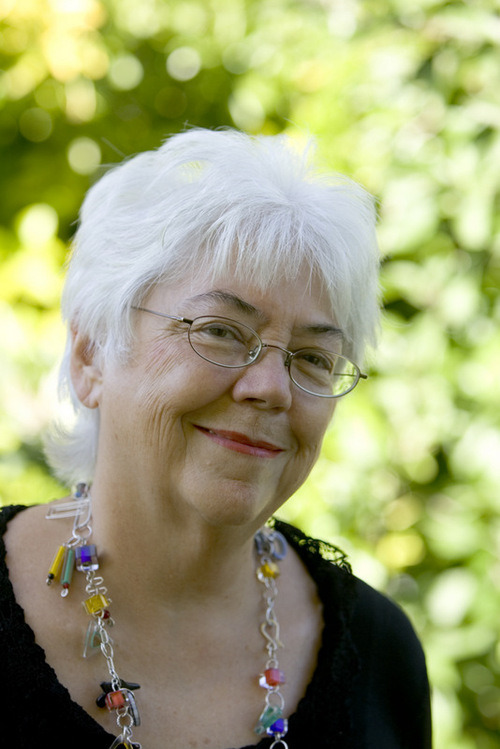
Alma Flor Ada, Professor Emerita at the University of San Francisco, has devoted her life to advocacy for peace by promoting a pedagogy oriented to personal realization and social justice. A former Radcliffe Scholar at Harvard University and Fulbright Research Scholar she is an internationally re-known speaker and the author of numerous children’s books of poetry, narrative, folklore and non fiction. Her books have received prestigious awards; among many: Christopher Medal (The Gold Coin), Pura Belpré Medal (Under the Royal Palms), Once Upon a World (Gathering the Sun), Parents’ Choice Honor (Dear Peter Rabbit), NCSS and CBC Notable Book (My Name is María Isabel). Her most recent books include Ten Little Puppies/Diez perritos and Yes! We Are Latinos co-authored with Isabel Campoy and two novels for middle grades, Dancing Home and Love, Amalia, co-authored with her son Gabriel Zubizarreta, all four of them Junior Library Guild Selections.
-
NPR Unveils a List of Diverse Children’s Book Recommendations
Books featured include American Born Chinese by Gene Luen Yang, Mexican Whiteboy by Matt de la Peña, and The Absolutely True Diary of a Part-Time Indian by Sherman Alexie. Read …
-
Kate DiCamillo Named New National Ambassador for Young People’s Literature, 2014-2015
Kate DiCamillo, Newbery Medal Award winner and honoree, was today named National Ambassador for Young People’s Literature by Librarian of Congress James H. Billington. DiCamillo will serve in the position during …




